When one thinks of a prominent artist from the area of Vercelli and its surroundings in Piedmont, it is inevitable that Gaudenzio Ferrari (Valduggia, c. 1477-80 - Milan, 1546) immediately comes to mind. He is in fact considered the greatest exponent of the 16th-century Piedmontese school of painting, which succeeded in combining Leonardoesque features of Lombardian painting and Renaissance influences, giving rise to a personal and original style.He was a painter, sculptor and architect of great stature, and Giorgio Vasari described him as follows in his Lives: “Pittore eccellentissimo, pratico et espedito [...] Worked still in oil excellently, and of his are many works in Vercelli and Varallo much esteemed by those who possess them.” Indeed, there are many traces of Gaudenzio Ferrari still visible in the Vercelli and Valsesian area. Here are what are the must-see places related to the artist.
Located in lower Valsesia, on the road that connects Valsesia to the lake area, Valduggia is a village of medieval origin famous for being the birthplace of Gaudenzio Ferrari. In the center of the square of the same name stands the monument depicting him, created by sculptor Giosuè Argenti in the 1860s. The parish church of San Giorgio houses a frescoed Nativity completed by Ferrari himself, visible in the third chapel on the left, and considered the church’s most valuable work. Also, in the Chapel of San Rocco, some frescoes can be seen that were probably done by the artist as an ex voto to thank St. Charles for the protection from the plague epidemic from which both he and his entire family were saved. The grotesques on the vault have also been attributed to Gaudenzio or his workshop mainly because of their innovative character for Valsesia at that time.
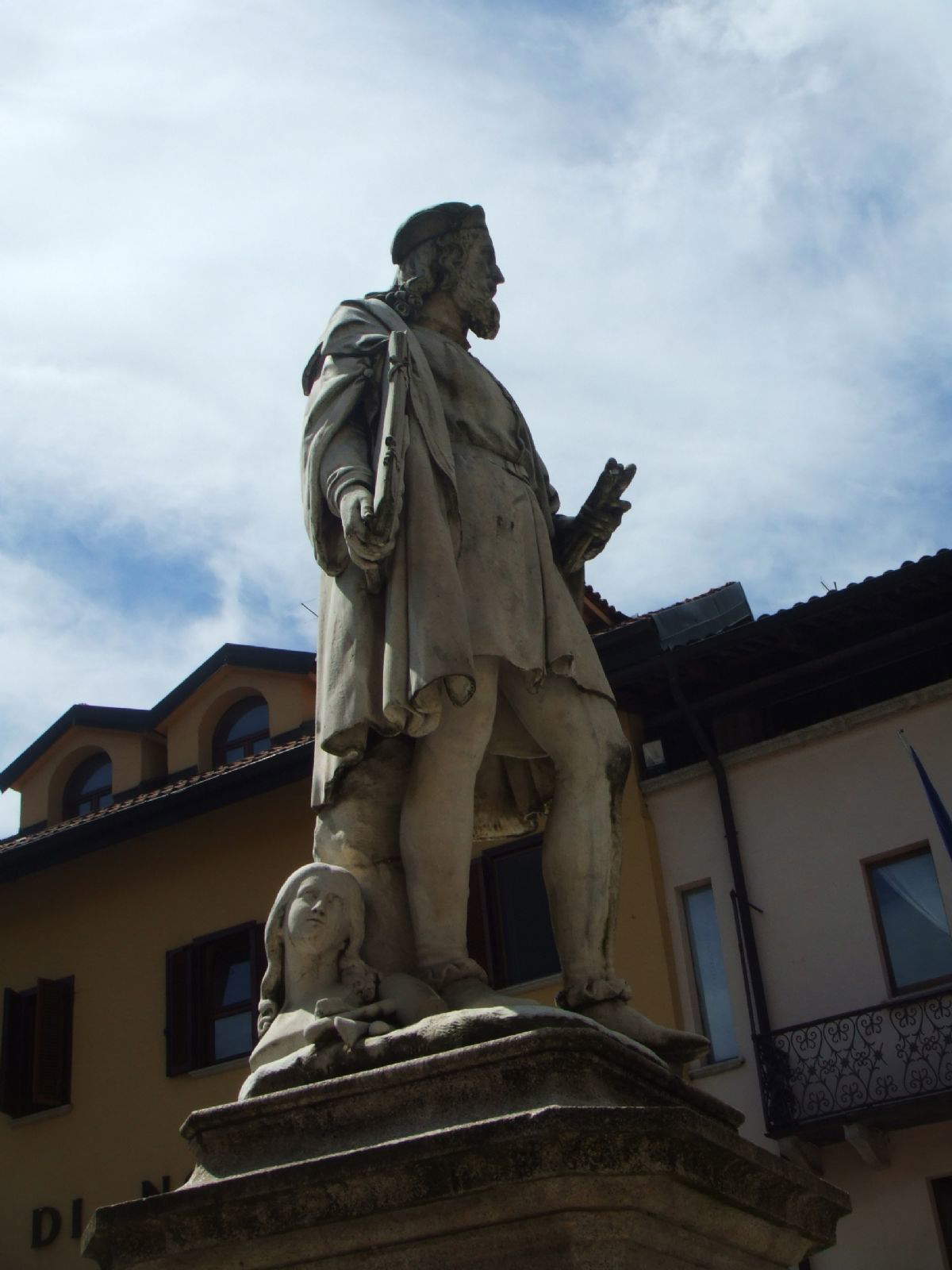
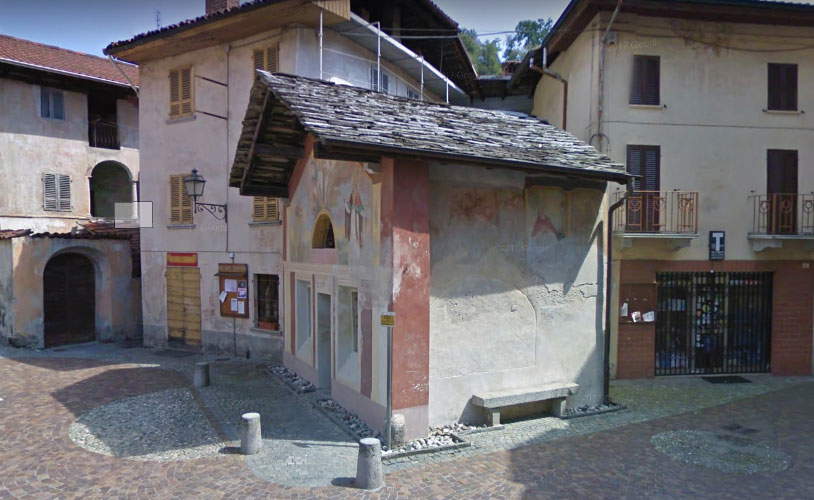
In Varallo, Gaudenzio Ferrari was called in 1513 to decorate some of the chapels of Sacro Monte with frescoes and statues , where he remained working until 1528. To him we owe the great emotional involvement with which visitors participate in the stories of the life of Christ; for example, the wooden statues in the chapel of theAnnunciation, the sculptures in the chapel of the Magi, the chapel of the Presentation of Christ in the Temple, perhaps the Christ and one of the thugs in the chapel of Jesus ascending the Praetorian staircase, and the entire Crucifixion scene are by the artist.
Of course, there could be no shortage of works by Gaudentius in the Pinacoteca di Varallo as well, such as the Crucifixion, which was originally located in Santa Maria delle Grazie in Varallo, theMan in a Red Cap, the Head of a Young Man , and the Saint Francis Receiving the Stigmata made for the chapel of the same name on Sacro Monte between 1515 and 1517.
In addition to Sacro Monte and the Pinacoteca, it is possible to admire masterpieces by the artist in the 15th-century church of Santa Maria delle Grazie, which is considered a sort of prologue to Sacro Monte, since it is located at the foot of the slope that leads from Piazza Gaudenzio Ferrari to Sacro Monte. This houses inside one of the most beautiful and significant works of art in Valsesia, namely the Parete Gaudenziana, entirely frescoed by Gaudenzio Ferrari in 1513 with twenty-one depictions of episodes from the life and passion of Jesus, from theAnnunciation to the Resurrection.
The Collegiate Church of San Gaudenzio, which dominates Varallo’s main square on a rocky promontory from above, holds another masterpiece by the artist on the back wall of the apse basin: a polyptych consisting of six panels depicting the Madonna and Child, St. Catherine and St. Joseph, St. Peter, St. Gaudentius, the Pieta, St. Mark and St. John the Baptist. The work was made between 1517 and 1520.
Finally, in the Renaissance Oratory of Our Lady of Loreto, halfway between the hamlet of Roccapietra and Varallo, frescoes completed by Gaudenzio (his name is the only one to appear among the documents along with that of Teseo Cavallazzi) between 1514 and 1521 are visible on the exterior: His is certainly the Nativity present in the lunette above the window of the facade, while inside are a sculpture of the Madonna del Latte in polychrome terracotta and the fresco depicting theAnnunciation, both attributed to the artist.
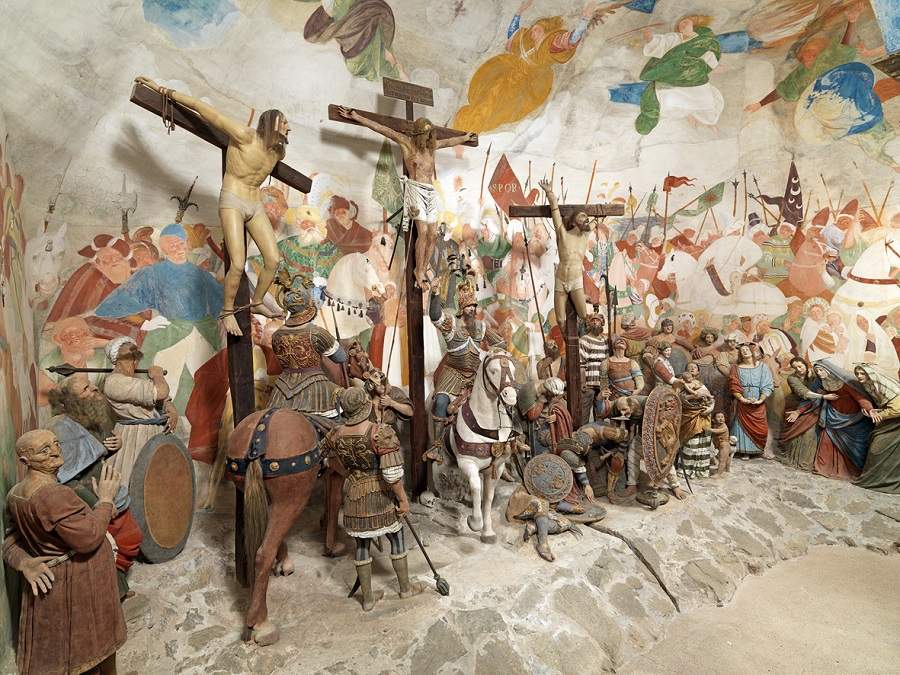
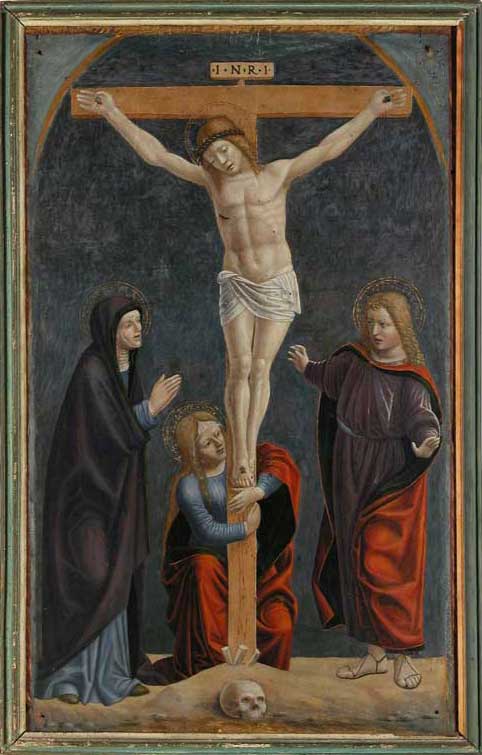
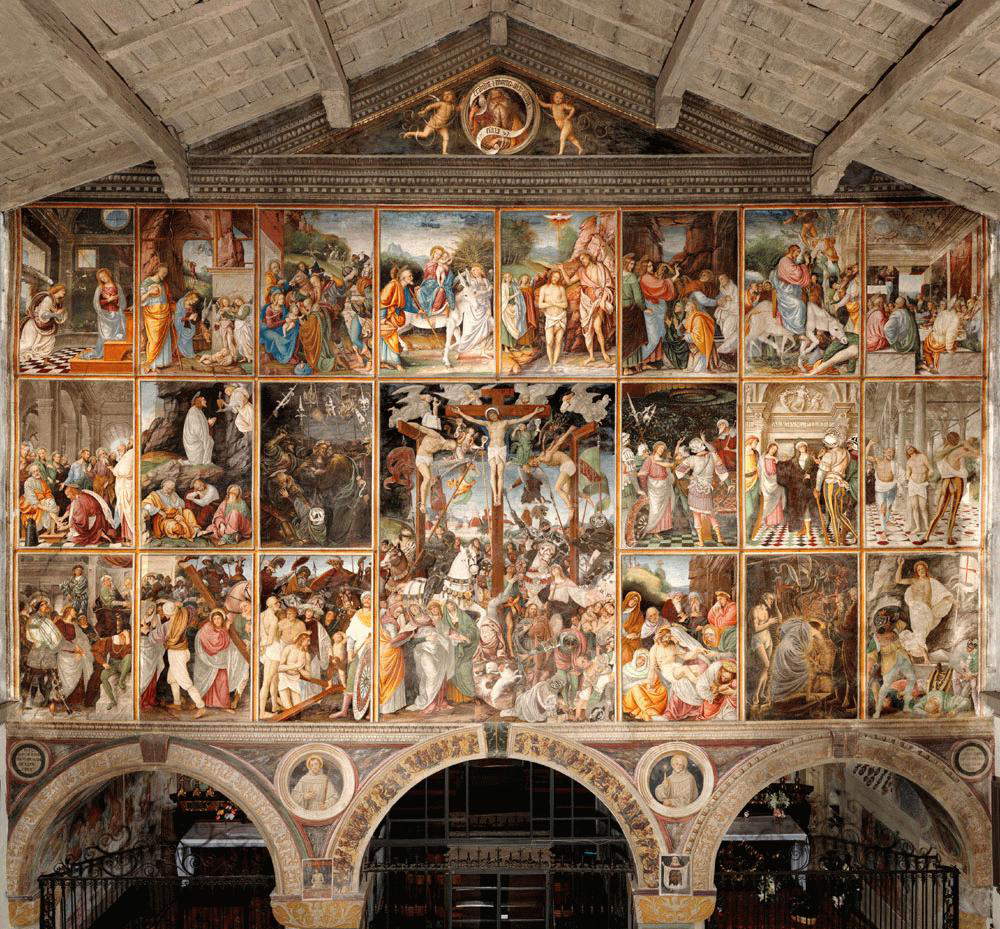
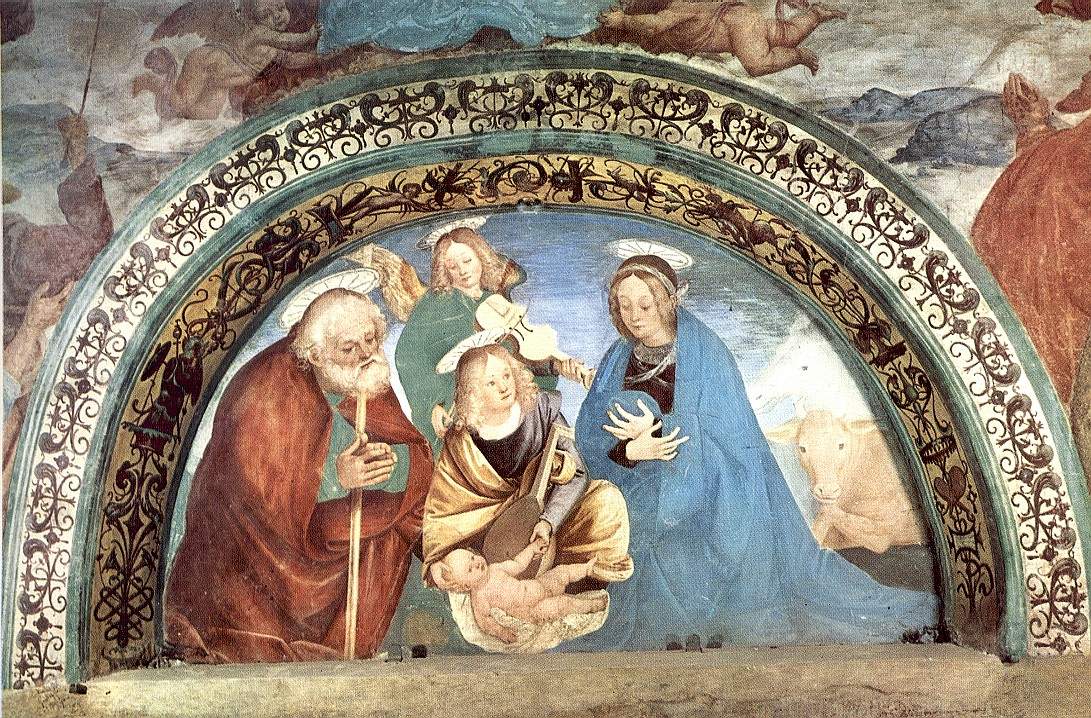
In Vercelli Gaudenzio Ferrari spent ten years of his life, from 1529 to 1539, and the place where the most significant traces of those years can be found is the church of San Cristoforo, also known as the Sistine Chapel of Vercelli. Entirely frescoed with the extraordinarily evocative cycles depicting the Stories of the Virgin and the Stories of Magdalene completed between 1532 and 1534, the church contains some of the most important masterpieces of the Piedmontese Renaissance, such as the Madonna degli Aranci altarpiece. Gaudenzio Ferrari signed the contract for the latter on June 27, 1529. In the center of the altarpiece is the seated Madonna with the Child standing leaning on his mother’s knees; the latter keeps his gaze turned toward St. Christopher, who is striding with his typical staff, and to the side, one can recognize St. John the Baptist with the lamb. To the left of the Virgin are St. Joseph, St. Nicholas of Bari, Blessed Orico, and, kneeling, the commissioner of the church’s reconstruction Nicolino Corradi da Lignana. The scene is enlivened by nine putti, mainly in the upper part of the work, including two musicians at the bottom. The name “Madonna of the Oranges” is due to the vegetation with yellow-orange fruits that extends in the upper part, between the seven putti at the top. Recent studies, however, have defined those orange fruits as quinces, typical of Valsesia.
Probably in the scene of theAdoration of the Magi, part of the cycle of the Life of the Virgin, Gaudenzio Ferrari self-portrayed himself: he is the bearded man on the right side of the work who stares fixedly at the viewer.


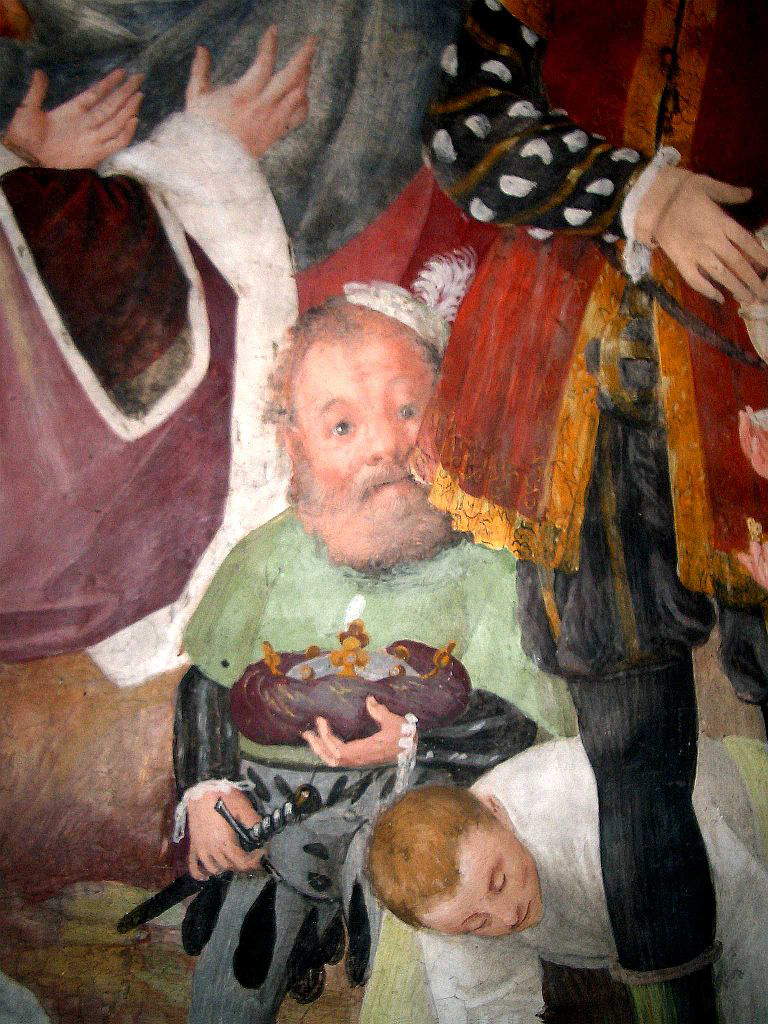
 |
| In the footsteps of Gaudenzio Ferrari, in Piedmont between Valduggia, Vercelli and Varallo |
Warning: the translation into English of the original Italian article was created using automatic tools. We undertake to review all articles, but we do not guarantee the total absence of inaccuracies in the translation due to the program. You can find the original by clicking on the ITA button. If you find any mistake,please contact us.